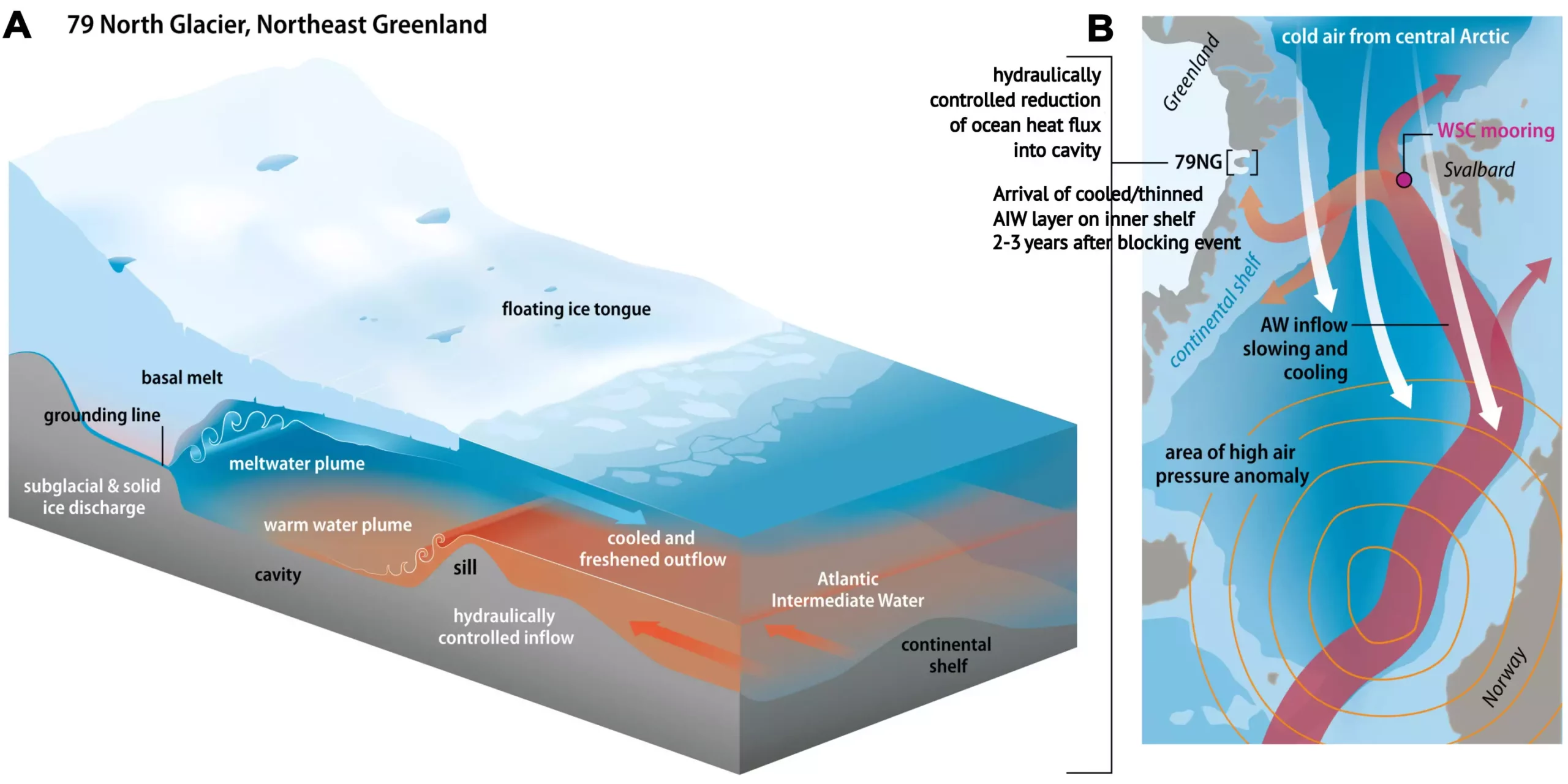Northeast Greenland is home to the majestic 79° N Glacier, which stands as a significant symbol of the impacts of climate change across the globe. This floating glacier tongue does not just represent a beautiful natural phenomenon; it is also a critical indicator of the changing climate. The melting of glaciers is driven primarily by rising ocean and atmospheric temperatures—an issue that is threatening the stability of ice structures and contributing to rising sea levels worldwide. The situation surrounding the 79° N Glacier encapsulates both the urgency of climate action and the complexities of oceanic systems.
Recent studies, particularly those conducted by the Alfred Wegener Institute, have shed light on the ongoing challenges faced by this glacier and its surrounding environment. The melting of Greenland’s glaciers has become increasingly pronounced over the decades, marked by a significant loss of mass. The Northeast Greenland Ice Stream, which mainly feeds into the 79° N Glacier, holds the potential to contribute to a staggering meter rise in global sea levels if it were to melt entirely. Understanding the factors behind glacial melting is crucial for predicting future environmental conditions.
One of the startling findings from the Alfred Wegener Institute is that the temperature of the water flowing beneath the 79° N Glacier actually declined between 2018 and 2021. This was surprising given that the surrounding ocean had been warming consistently over several decades. Dr. Rebecca McPherson, a leading researcher, stated that the findings highlighted a significant cooling, contrasting sharply with the regional trend of warming. The reduced temperature of the ocean water entering the glacier’s cavern indicates that the glacier itself may have experienced a slower melting rate during that period.
This phenomenon leads to a crucial question: what caused the water temperature to drop despite broader warming trends? The researchers employed a variety of oceanographic monitoring techniques to gather data from 2016 to 2021, providing valuable insights into oceanic flow patterns and temperature variations at the glacier’s calving front.
The analysis revealed that atmospheric circulation changes, specifically atmospheric blocking phenomena, played a key role in the observed temperature decline. Atmospheric blocks can lead to deviations in prevailing air currents, allowing cold air from the Arctic to penetrate farther south, thus cooling the waters of the Norwegian Sea and Fram Strait. The cooling effect resulted in colder water being directed towards the glacier, highlighting the interconnectedness of atmospheric conditions and oceanic behavior.
This intricate relationship emphasizes that phenomena far from the glacier itself can have immediate consequences for glacial stability. As warm water is diverted and cooled, the visual repercussions are not confined to the glacier but resonate throughout the ambient ecosystem. The importance of understanding atmospheric interactions cannot be overstated, as they are instrumental in predicting future glacial behavior.
The researchers plan to return to the 79° N Glacier aboard the research icebreaker Polarstern in the summer of 2025, hoping to gather updated data amid fluctuating ocean temperatures. Notably, they have already recorded a slight uptick in water temperatures in Fram Strait. This escalating warmth raises concerns about potential subsequent increases in glacier melting rates, reinforcing the need for ongoing monitoring and research.
With climate change leading to rapid transformations in glacial ecosystems, predicting the future of the 79° N Glacier becomes essential not only for scientific understanding but also for implications surrounding sea-level rise. As the dynamics of the Atlantic Meridional Overturning Circulation (AMOC) continue to evolve, the data garnered from ongoing research efforts is vital for refining future sea-level forecasts.
The findings regarding the temperature fluctuations surrounding the 79° N Glacier exemplify the complexity of climate change and its diverse impacts on glacial structures. As researchers continue to uncover the underlying processes that dictate glacial melting, it is clear that both atmospheric and oceanic variables must be taken into account to inform climate strategies. Greater awareness and action are needed to address these significant phenomena as they directly affect not only local ecosystems but also global sea levels. The 79° N Glacier serves as a potent reminder of the urgency to tackle climate issues, and the commitment to ongoing research is essential in the pursuit of solutions.

